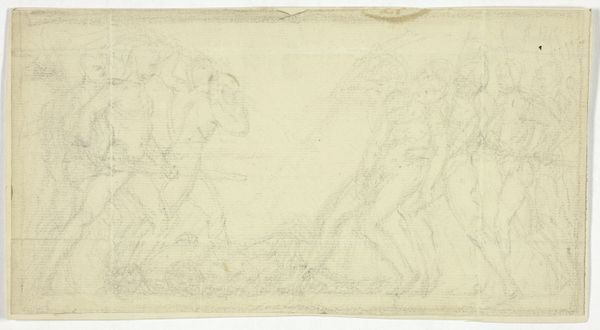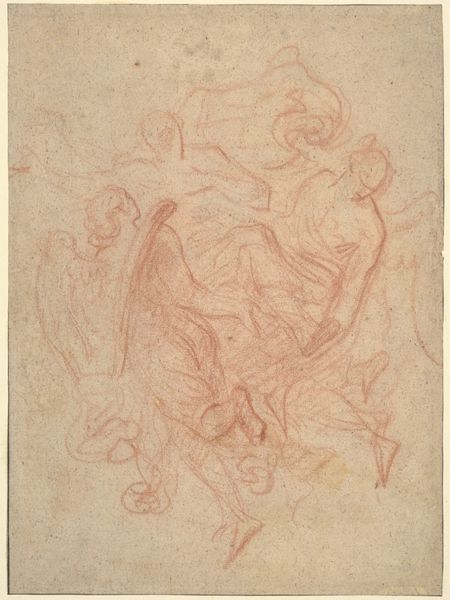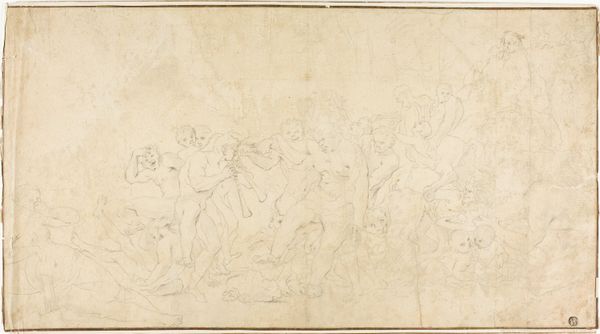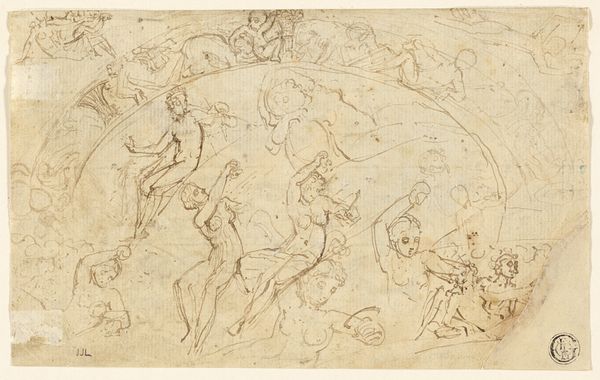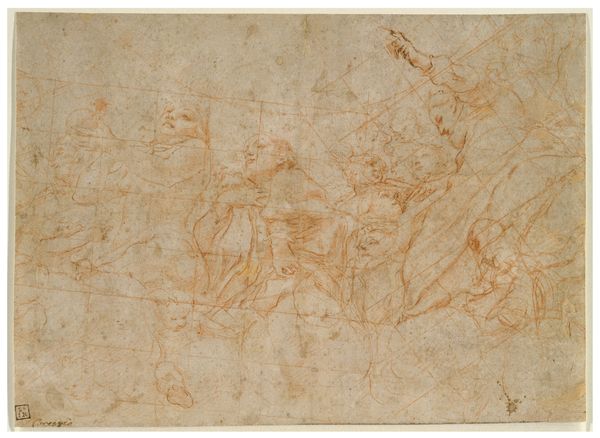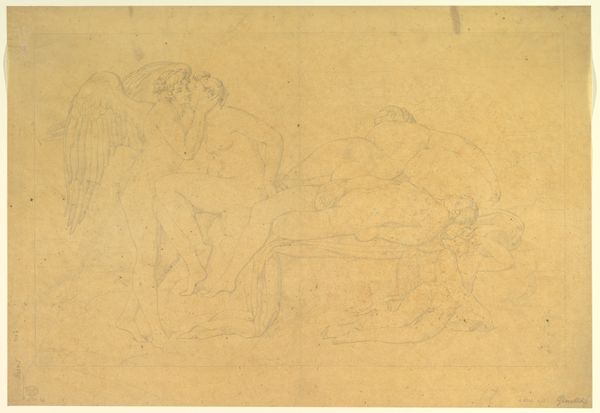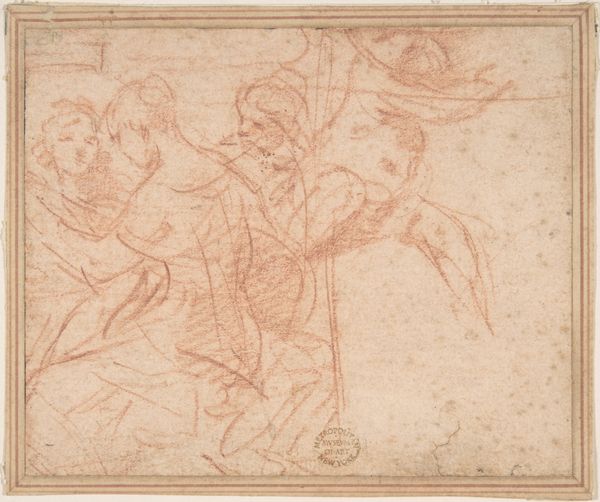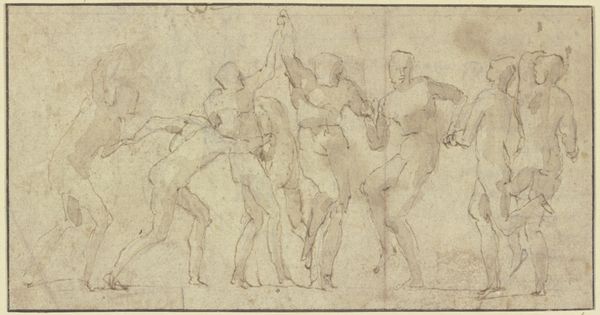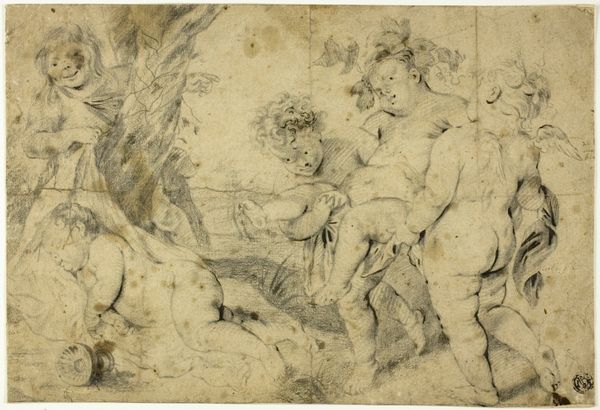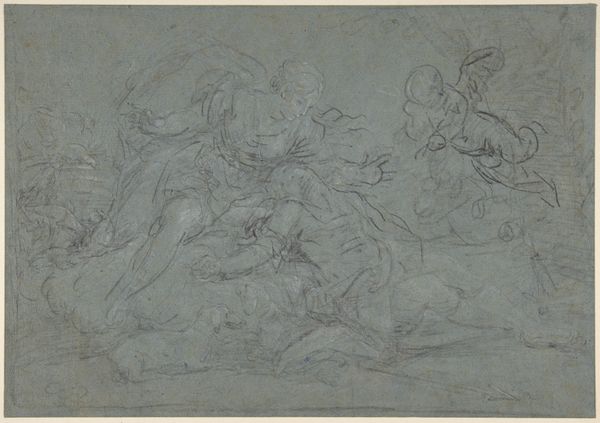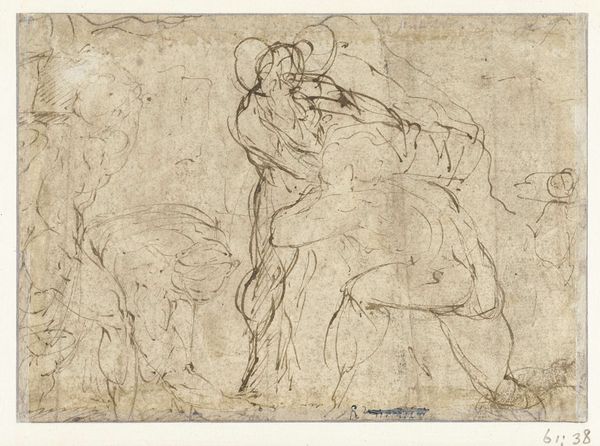
drawing, paper, pen
#
drawing
#
charcoal drawing
#
figuration
#
paper
#
11_renaissance
#
pen
#
italian-renaissance
#
nude
Dimensions: 9 1/8 x 11 in. (23.2 x 27.9 cm)
Copyright: Public Domain
Curator: What we have before us is a drawing titled "Two Nymphs Carrying a Third," attributed to Francesco Primaticcio, dating from around 1544 to 1550. Editor: It feels… precarious. They look like they're in flight, and the third nymph looks totally out of it. I wonder what's going on? Curator: Indeed. The composition is quite dynamic. Notice the use of line—the sinuous, elongated figures, rendered in pen and charcoal, exhibit what we might call "figura serpentinata," a hallmark of the Mannerist style. Observe how the weight is distributed; the carrying nymphs are almost unnaturally graceful, their muscles subtly defined. Editor: Graceful, yeah, but also a bit strained? It’s interesting; their faces are barely there, kind of ghostly, which adds to the feeling that this is a scene snatched from a dream. Almost as if these nymphs are not real beings… The loose hatching strokes around them adds to the haze and dreamlike atmosphere. It’s strange how they carry each other through such an ethereal space. Curator: That ambiguity, I think, is precisely the point. Primaticcio, as a key figure in the School of Fontainebleau, often employed classical subjects as vehicles for exploring ideas about beauty, elegance, and artifice. Here, we have a clear reference to classical antiquity, but the interpretation is deliberately ambiguous. It's not simply about representing a mythological scene, it's more about the play of forms, and a deliberate manipulation of ideal beauty. The nymph who is carried has the air of someone near death… Editor: Yeah. And this little dog sniffing around near their feet! Is that Cupid’s dog perhaps, indicating more to this artwork than is first seen? It just seems so normal juxtaposed with everything else. It adds a sense of unease… almost as if death could be seen as an accepted component in this world. Curator: The beauty of drawing lies precisely in its immediacy. Here, we can almost see Primaticcio working through his ideas, adjusting the poses, refining the forms. The faint outlines suggest the evolution of the design, allowing us insight into the creative process itself. Editor: Right. Well, it certainly sparks the imagination, doesn’t it? The mystery of it, the ambiguous story, makes you want to invent your own narrative. Curator: I concur; it offers a compelling look into both the artistic theories and practices flourishing during the Italian Renaissance. Editor: It’s interesting how, even though the work is unfinished in some ways, it has a power about it, isn't it? An image that lives and breathes.
Comments
No comments
Be the first to comment and join the conversation on the ultimate creative platform.
